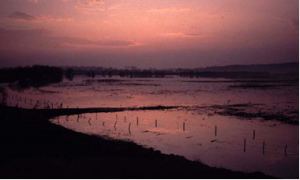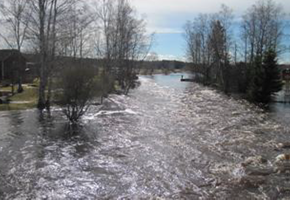Category:Ecosystem Services
Valuing the ecosystem services provided by European river corridors – an analytical framework
A methodology is provided to first assess ecosystem services in biophysical terms and then value these in economic terms. The methodological framework ss geared to allow a differentiation of restored and unrestored section of the river and its floodplain in Europe. It closely follows the CICES/MEA typology of ecosystem services focusing on final services that are of direct benefit to society. Underlying, supporting services are incorporated in these final services to which they contribute, sometimes in a convolute way. The methodology is designed and has been tested for a range of specific cases selected in REFORM, notably the Regge (NL), Skjernaa (DK), Vääräjoki (FIN), Narev (POL), Emaa (SWED), Drae and Enns (AU) and Thoess (CH). Below two cases are briefly presented.
The methodology can be downloaded as REFORM deliverable D2.3.
The main components of the methodology are:
- The CICES/MEA typology of ecosystem services
- A breakdown of the river corridor into homogeneous landscape elements, or habitat units, adhering to the European, harmonised EUNIS/CORINE habitat classification.
- A list of potential services provided by each habitat type, with an indicative potential range of the service delivered in biophysical terms (e.g kg/(ha.yr) and an approach to quantify these locally as fluxes in these same units.
- A toolbox of economic valuation techniques to estimate monetary values for these fluxes.
The report contains cross-links to the geomorphological river typology also carried out in WP2 of REFORM.
Application of the method in two cases, the Regge (NL) and the Vaarajoki (FIN).
In the Regge case, the floodplain has been lowered , ponds have been created and the former meandering course has been re-installed over a considerable stretch, and this will be carried out along most of the length of the river. A restored section (Archemermaten, 105 ha) has been compared with a non-restored section (Dalmsholte, 50 ha), a bit further downstream. Restoration greatly increased the cultural value, mainly due to recreation (in 2012 over 11000 visitors rented kayaks, canoes and rafts) and appreciation of the enhanced scenic landscape (Fig. 1). Agricultural hay production was less in the restored section, whereas reduction of downstream flood risk was contributing substantially to an increased value of regulatory services. Also an increased aquifer infiltration of drinking water from the restored floodplain of the Regge added value.
In the Vääräjoki, restoration involved the return of large boulders into the streambed along 16 km of river and the application of some gravel beds. The restored reach was downstream of the non-restored reach. Here these returned boulders increased roughness of the streambed, which hampered drainage, raised the water level a bit, hence also affected upstream flooding of agricultural land during spring snow melt floods and summer floods. This reduced agricultural productivity as well as revenues a bit. The substantial willingness to pay of 29 euro per household per year for this increased esthetical aspect of the river was reduced to a minor fraction of the total value per ha because of a low population density. Total annual economic value (Fig. 2) as estimated from ecosystem services in this river is mainly due to arable crops in parts of the floodplain (15%, forest 50%), is comparatively low and restoration has slightly reduced this value.
This category currently contains no pages or media.



